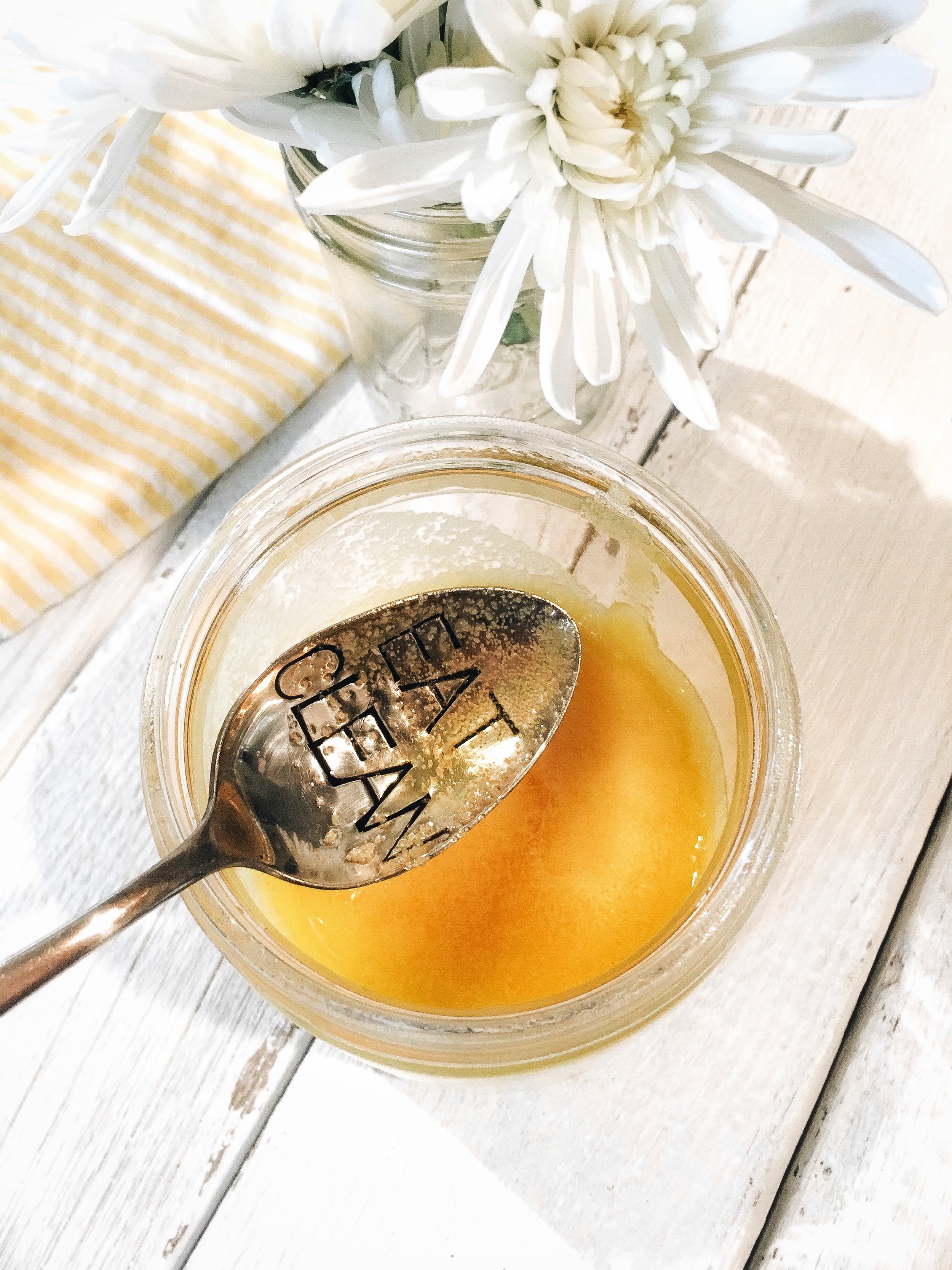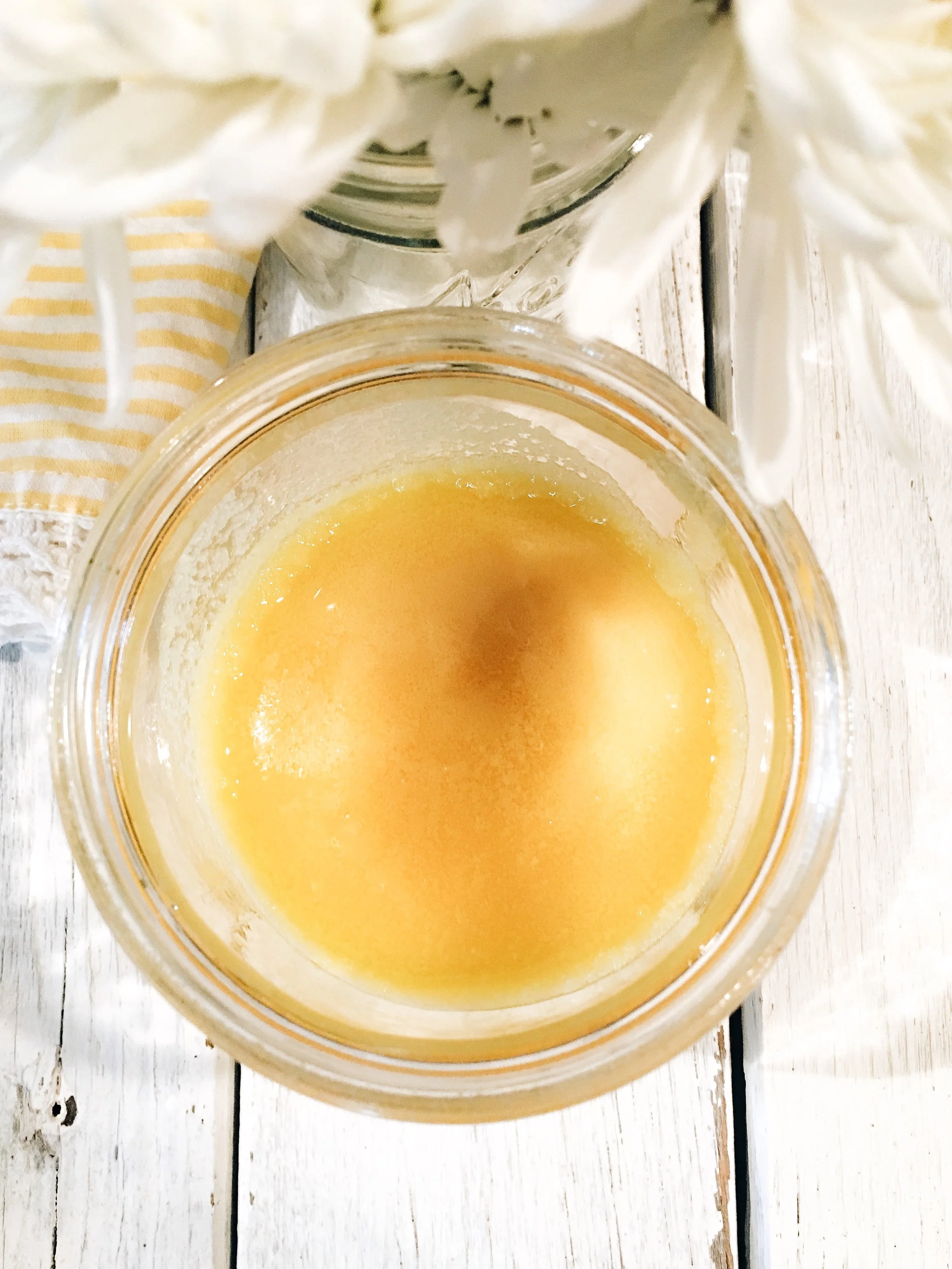WHAT IS GHEE?
Ghee is essentially butter that is clarified resulting in a nuttier more intense flavor. The process of straining out the milk solids makes this nutty cooking oil lactose and casein-free; as well as making it stable to be stored outside the refrigerator.
Ghee is loaded with amazing benefits and here are a few that appeal to me.
Ghee contains butyric acid acting as food for the cells of a healthy colon, and is known as a potential anticancer fatty acid. Consuming butyric acid in foods like ghee has been shown to aid digestion, calm inflammation and improve overall gastrointestinal health.
Ghee is comprised of full spectrum short, medium and long chain fatty acids, both unsaturated and saturated. Ghee contains Omega 3 and Omega 9 essential fatty acids along with vitamins A, D, E and K2. In addition, Ghee made from organic butter of pastured cows is one of the highest natural sources of CLA (Conjugated Linoleic Acid)
Ghee has a high smoke point of 485 degrees- it doesn't burn like butter and out does coconut oil's smoke point of 350 degrees.
People often ask me if I use Ghee in place of Coconut Oil for cooking and I have to say that I use Ghee about 2/3 of the time. Coconut Oil has many benefits especially it's anti-fungal and anti-bacterial properties, but unlike Ghee it is not high in fat soluble Vitamins like A, D, E & K2. I usually encourage clients, who don't have an aversion to either, to use both and reap the benefits of both.
Some of my favorite uses for Ghee:
Cooking/Frying/Baking
Supplement to my Coffee/Broths
Making Organic Popcorn!!! You have to try it- it's wonderful!
Some people use it as a moisturizer. I can understand why considering the high Vitamin A, & E content. I may have to try it!
HOW GIGI MAKES GHEE!
What you will need:
High Quality Unsalted Butter (I usually use 1/2 to 1 pound)
Saucepan
Spoon
Cheese Cloth
Glass Jar for storage
INSTRUCTIONS:
Cut unsalted butter into one inch squares allowing the butter to melt evenly.
Set stovetop burner to just below medium heat. This is the setting that I use- I do realize that all stovetops vary. You do not want the butter to burn so somewhere between medium and low. Place butter squares into saucepan and melt while stirring, occasionally.
Once the butter is melted you will begin to notice a white (curdling) foam forming at the top. This is whey. Simply skim off the top with a spoon, as best you can.
After skimming the whey, I turn down the heat to right between medium & low setting and allow the butter to simmer for approximately 5 minutes. During this 5 minutes the following should happen:
Foam will become thinner and bubbles will become bigger and clearer. Milk Solids will curdle and adhere to the sides and bottom of the saucepan. Simply scrape the milk solids down the pan- helping them to the bottom.
At around 5 minutes or more you will notice the milk solids at the bottom beginning to brown and a second foam will form at the surface- at this point remove from heat.
Remove from heat and let the Ghee settle in the saucepan for a minute or two. Place a cheesecloth (double or tripled) over a strong glass jar that can handle heat. The Ghee will still be very hot.
Pour Ghee over cheese cloth into the glass jar.
Cool at room temperature until solid.
You may cover with a lid after about 30 minutes of cooling. It will take several hours for the Ghee to become solid.
Store in cupboard or countertop and ENJOY!
Blessings,
Gigi










